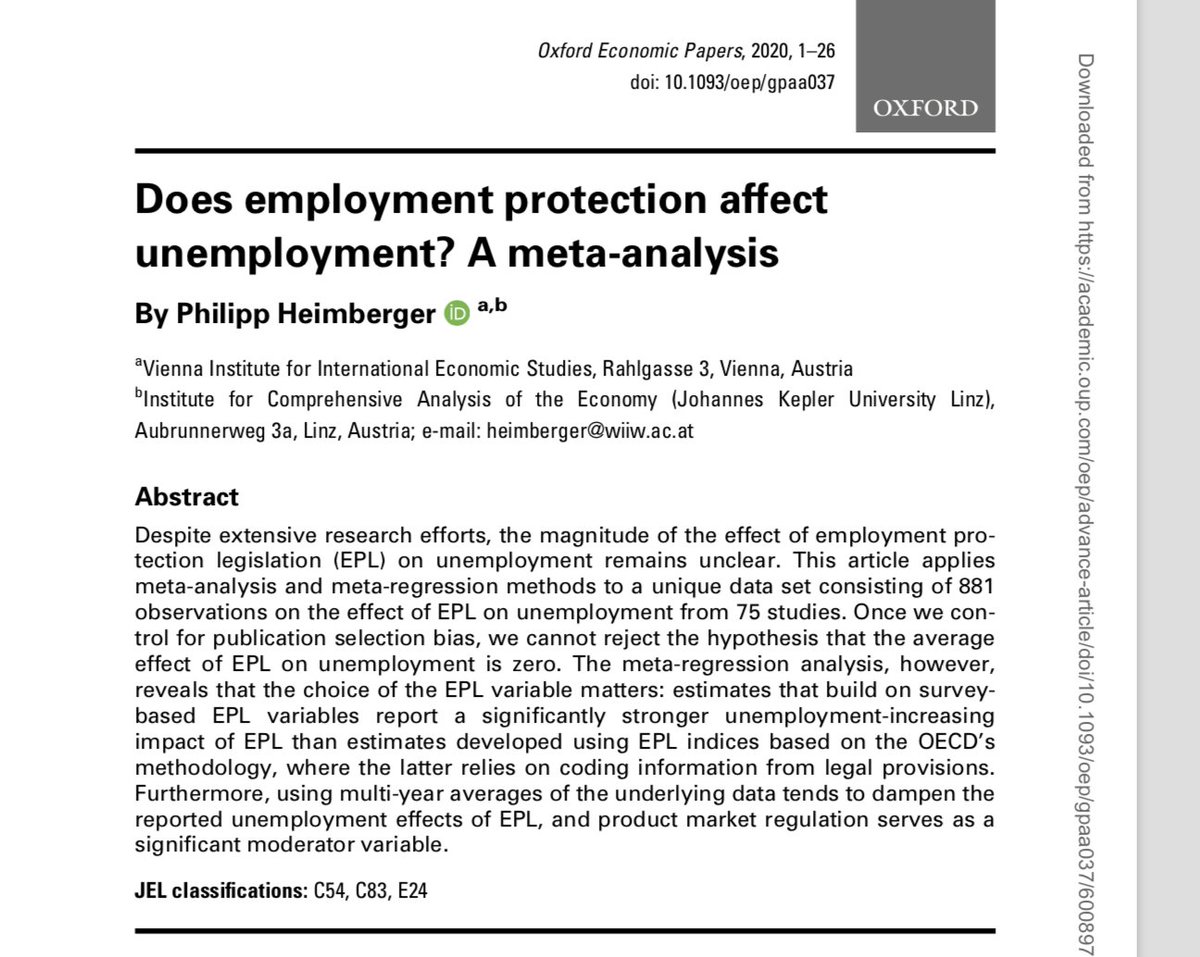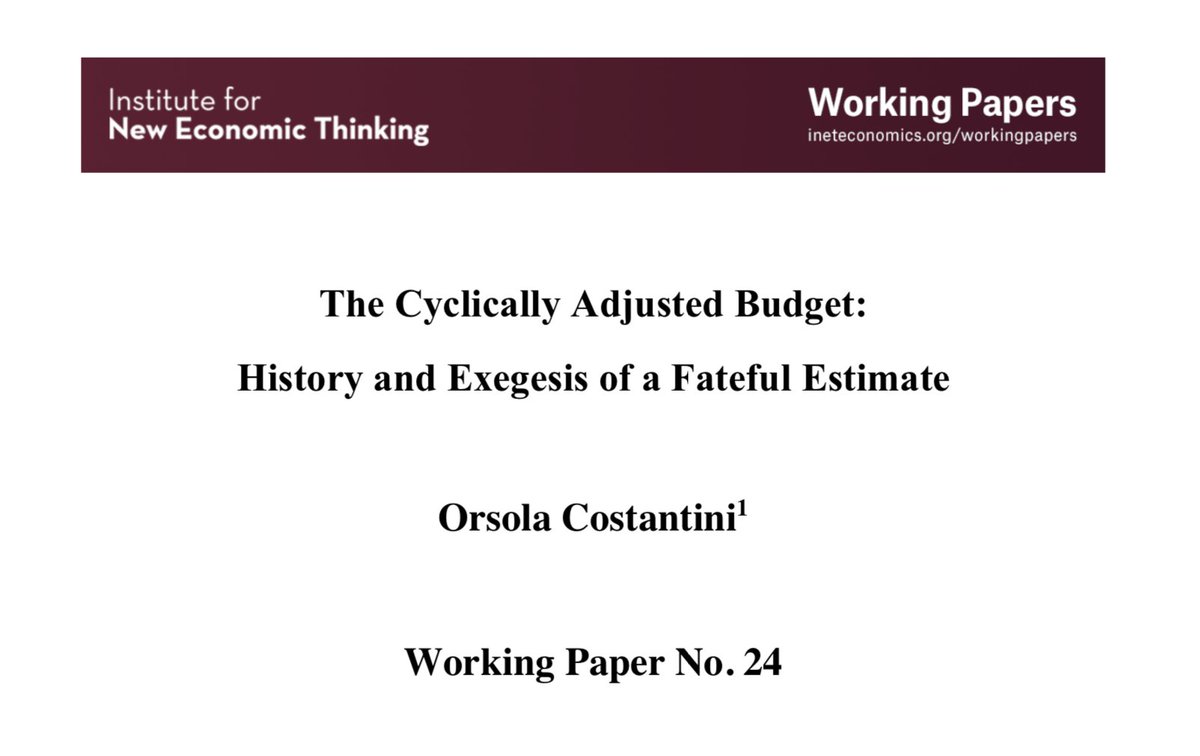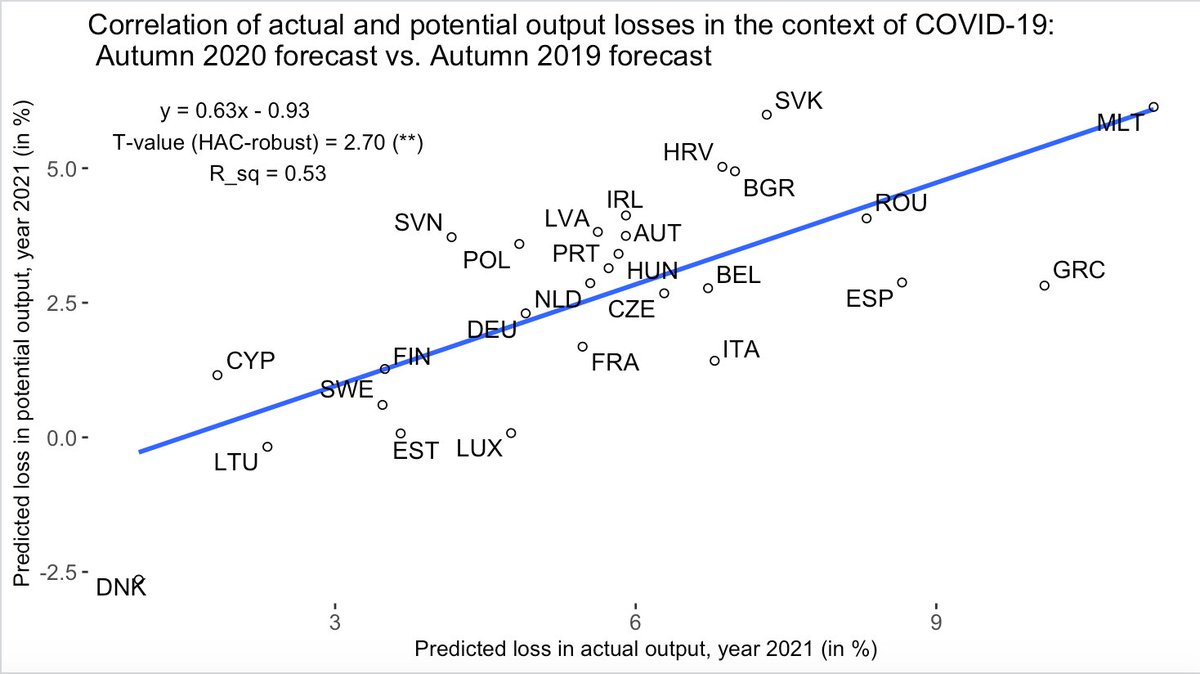
Does employment protection affect unemployment? My meta-analysis on this question is now published in "Oxford Economic Papers". The average (precision-weighted) effect is zero, but data and specification choices matter for reported effects. A thread: /1
academic.oup.com/oep/advance-ar…
academic.oup.com/oep/advance-ar…

In theory, the effect of employment protection on unemployment is ambiguous. Reported empirical findings are mixed. Qualitative surveys are potentially misleading, but using meta-analysis can help. /2 

I construct a novel data set consisting of 881 observations on the effect of employment protection (EPL) on unemployment from 75 studies. Once we correct for (mild) publication selection bias, the average effect cannot be distinguished from zero. /3 

The meta-regression analysis shows that data and specification choices explain parts of the variation of reported results. The choice of the EPL variable and unemployment variable as well as data averaging and controlling for product market regulation matter /4 

There is no robust evidence for an overall adverse impact of employment protection on unemployment. The meta-evidence clearly rejects an across-the-board policy focus on strict EPL as a cause of increased unemployment. /5
Here is an ungated version of the paper: researchgate.net/publication/34…
And here are the data and code files for replicating all results from the paper:
github.com/heimbergecon/e…
\end
And here are the data and code files for replicating all results from the paper:
github.com/heimbergecon/e…
\end

• • •
Missing some Tweet in this thread? You can try to
force a refresh














